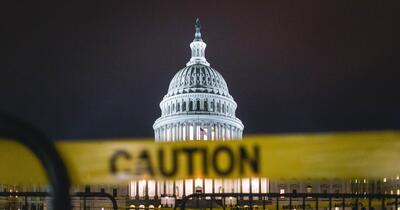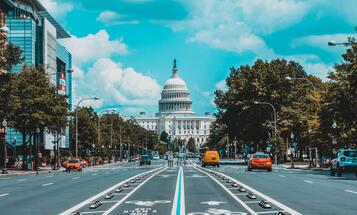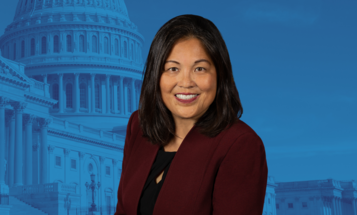
Biden’s Proposed Build Back Better Act Strengthens Our Economy and Democracy but Much More Remains to be Done
The Build Back Better Act would dramatically help working people and families. Now, the passage of this once-in-a-lifetime framework is in the hands of a few legislators who are beholden to corporations and the ultrarich.

Introduction
Failing to move forward with these critical investments would be detrimental to communities across the country.
On Friday, Congress passed the Bipartisan Infrastructure Bill (BIF), a package containing long-overdue investments in roads, bridges, and clean water that marks an important first step in tackling our nation’s crumbling physical infrastructure. However, without being paired with additional funding in our social infrastructure, the BIF falls woefully short.
As the Build Back Better Act approaches a vote, Congress is nearing the finish line on passing a number of provisions that would dramatically help working people and families. The passage of this once-in-a-lifetime framework is now in the hands of a few Congresspeople who are beholden to corporations and the 1 percent. Responding to pressure from corporate lobbyists, Senators Joe Manchin and Kyrsten Sinema have narrowed the size of the already negotiated reconciliation and infrastructure package to nearly half of its original size—from $3.5 trillion to $1.85 trillion. Even after winning concessions, they are still signaling hesitancy about passing the overwhelmingly popular social spending package. Meanwhile, moderate Representatives Ed Case, Jared Golden, Josh Gottheimer, Stephanie Murphy and Kurt Schrader demanded a CBO score at the last minute, both causing a delay of the bill and jeopardizing historic investments in climate, jobs, and justice. Failing to move forward with these critical investments would be detrimental to communities across the country, causing disproportionate harm to people of color and other marginalized communities. It would highlight the real intentions of many of our legislators in Congress: putting corporations and those at the very top in front of everyone else. Unfortunately, the latest Build Back Better framework misses opportunities to increase economic security for working people, reflecting the enormous influence that corporate America has on our representatives. While passing this historic legislation would mark an important first step, much more remains to be done.
Building economic security will do more than provide immediate relief for our most marginalized communities and grow our economy. It will also establish a foundation for strengthening democratic participation.
Building economic security will do more than provide immediate relief for our most marginalized communities and grow our economy. It will also establish a foundation for strengthening democratic participation.
Simply put, if an individual is worried about whether they will be able to afford childcare, healthcare, or other daily expenses, they will experience more barriers to getting to the polls. These might include being unable to request an absentee ballot because they lack a stable residence, or not having the time to read complicated laws about address requirements for voter registration or to find out where their new polling location is. The lack of economic security undermines the goal of a more equitable democracy. For example, Black and brown voters were hit the hardest by the housing crisis during the pandemic. This directly impacted their ability to provide an address to register to vote, request an absentee ballot to avoid long lines at crowded polling places during a pandemic, and receive an absentee ballot at an address where they may be temporarily residing.
James Baldwin highlighted the nexus between economic stability and the ability to participate in our democracy in numerous works. While outlining the successful efforts of white supremacists to destabilize Black and brown communities through discriminatory economic policies, such as housing and healthcare laws, he also highlighted the progress that Black and brown organizers have had in creating mutual aid networks to increase economic stability and, in turn, build political power. In a piece analyzing the 1980 presidential election, Baldwin stated “My black vote, which has not yet purchased my autonomy, may yet, if I choose to use it, keep me out of the ballpark long enough to figure out some other move. Or for the children to make a move. Or for aid to come from somewhere. My vote will probably not get me a job or a home or help me through school or prevent another Vietnam or a third World War, but it may keep me here long enough for me to see, and use, the turning of the tide—for the tide has got to turn.”
While the bill includes multiple provisions that would help bring more economic stability to marginalized communities, it also excludes many other provisions that would particularly benefit these communities, underscoring the urgent need for Congress to expand on the Build Back Better foundation. We provide a few examples of this dynamic below, but this is not an exhaustive list of provisions in—or those taken out of—the reconciliation bill that will actively counter racist socio-economic policies and build a more inclusive democracy.
The latest Build Back Better framework: a foundation to help stabilize Black and brown communities
- Expanding EITC and CTC: The Build Back Better Act would extend the Child Tax Credit expansion in the American Rescue Plan (ARP) as well as the ARP’s increase to the Earned Income Tax Credit. This is estimated to dramatically reduce child poverty, with the sharpest reductions in the poverty rates for children who are Black and Latinx. According to the Center on Poverty and Social Policy at Columbia University, the first 2 expanded CTC checks have already lifted 3.5 million children out of poverty.
- Childcare: Low-income working families spend more than a third of their income on childcare. Structural economic barriers, including those which have caused and maintained racial gaps in wealth and income, as well as occupational segregation, have meant that families of color face an even tougher childcare crunch Black people are twice as likely as their white counterparts to report that they are unable to look for work because they cannot find childcare or because they have other family responsibilities. By including a $400 billion investment in childcare, including through capping childcare fees at 7 percent of a family’s income and providing universal free preschool for all 3- and 4-year-olds, the Build Back Better framework will help bridge this gap and pave the way toward economic security for families.
- Addressing climate change: The public health implications of climate change and its disproportionate impact on Black and brown communities are well-documented. One in 3 people in the U.S. live in a county hit by a weather disaster in the last 3 months. A recent report from the Environmental Protection Agency finds that Black individuals are 40 percent more likely than non-Black individuals to live in areas with the highest projected increases in mortality rates due to climate-driven changes in extreme temperatures. People of color tend to live in areas with more pollution from every type of source, from industry to agriculture, vehicles, and emissions from restaurants. The Build Back Better framework takes a huge step toward confronting the climate crisis with a combination of historic investments, including consumer rebates for a variety of clean energy sources, funding for clean energy projects, climate resilience programs, and a new Civilian Climate Corps. However, much remains to be done to confront the climate crisis so our planet can be protected for generations to come. As a result of corporations vehemently pushing back against the most important climate provisions in the initial Build Back Better plan, the provision’s original centerpiece, the $150 billion Clean Electricity Performance Program, was stripped out. We can’t afford to stop here: We must continue to fight back against corporate interests and invest in public and community ownership of renewable energy as we decarbonize all sectors of the economy and phase out the fossil fuel industry.
- Home care: The bill includes significant investments in home health aides, which will improve wages and quality of life for essential home health workers and yield significant economic benefits for low-income communities and communities of color. Home health and personal care aides earn an average hourly wage of just $13.49—less than half the average hourly wage across all industries in the country. However, in some states—in particular, Southern states like West Virginia, Alabama, Louisiana, and Texas—the average wages are much lower. Workers in these states stand to disproportionately benefit from the robust investments in our home healthcare workforce included in the original Build Back Better agenda. Unfortunately, the plan was significantly watered down, cutting funding by more than half. Much more is needed to fix our broken system of home care work. To address the scale and scope of the problem, Congress must allocate more funding to meet the $400 billion need of the home care workforce.
- Prescription drug pricing: While the U.S. pays the most for prescription drugs of all countries in the world, not everyone is impacted equally. Black and brown people are diagnosed at higher rates with conditions such as hypertension, diabetes, and heart disease, and are more likely to ration medications at higher rates than their white counterparts. The bill makes significant strides toward addressing these barriers and expanding and improving public health by allowing Medicare Part D to negotiate directly with pharmaceutical companies, penalizing pharmaceutical companies that unfairly raise drug prices, and capping annual out-of-pocket prescription drug costs for seniors at $2,000. However, because of pushback from giant pharmaceutical companies, the prescription drug deal was significantly weakened, including through granting most drugs patent exclusivity for 9 years before negotiations could start. Congress must continue to tackle the price-gouging practices and monopoly control of pharmaceutical giants.
- Healthcare: The proposed legislation expands Medicare to include hearing coverage which would help the many people who cannot access hearing care due to cost. Nationally, more than 2 million poor, uninsured adults fall into the “coverage gap” that results from state decisions not to expand Medicaid. Most of these people live in the South and are people of color. The bill would help fill the gap by providing insurance for people in the states which have thus far refused Medicaid expansion. In fact, a recent study found that greater barriers to voting are associated with greater odds for being uninsured among adults who are non-Hispanic Black, Asian, young, and/or from low household income backgrounds. While the plan will lower healthcare costs by adding hearing coverage to Medicare, dental and vision benefits were stripped from the latest iteration of the package. Much remains to be done to fill the gap for the millions of people in the U.S. who currently lack access to comprehensive health benefits.
- Housing: The housing elements of the Build Back Better plan would mark the largest federal investment in affordable housing in a generation, funding more low-income affordable housing than at any point in our country’s history—an especially critical investment considering that no state in the country currently has an adequate supply of affordable housing for low-income renters. Communities of color face even more obstacles in finding affordable homes compared to their white counterparts. The National Low Income Housing Coalition found that 20 percent of Black households, 18 percent of American Indian or Alaska Native households, 14 percent of Latino households, and 10 percent of Asian households are extremely low-income renters, compared to only 6 percent of white non-Latino households. Federal investments like those included in the latest Build Back Better framework could help dramatically reduce these gaps.
- Paid leave: In its latest form, the House bill establishes 4 weeks of national paid family and medical leave, down from the 12 weeks originally proposed. Overall, 79 percent of workers do not have paid family leave through their jobs, and 60 percent lack access to paid personal medical leave through their employer. Low-wage workers, women, and Black and Latinx workers are much less likely than their white, male counterparts to have access to paid leave. Wealth and income inequality across lines of race, gender, and ethnicity mean that families of color have fewer resources than white families to plan for and absorb the effects of a serious personal or family medical issue, making these benefits especially crucial. To allow all people to take care of themselves and loved ones in need, Congress must continue to fight for at least 12 weeks of paid leave.
- Immigration reform: The plan includes significant funding for immigration reform aimed at reducing backlogs, expanding legal representation, and ensuring a more humane asylum system. However, much more needs to be done to support our immigrant communities, including by providing citizenship for all undocumented immigrants in the country and ending collaboration with immigration enforcement agencies to ensure freedom from deportation and detention for these communities.
Legislators must prepare alternative proposals so that Congress can deliver on this desperately needed piece of the Build Back Better plan.
As it currently stands, the latest framework does not include a pathway to citizenship for undocumented people in the U.S.; Congress must continue to fight for this through reconciliation. Part of the initial proposed legislation in Biden’s Build Back Better plan would have provided a pathway to citizenship to Dreamers, essential workers, and individuals eligible for Temporary Protected Status (TPS) and Deferred Enforced Departure (DED). This is estimated to help 6.9 million people get access to citizenship—a group nearly the size of the entire population of Massachusetts. This includes an estimated 152,800 people in West Virginia and Arizona—2 states whose representatives have stood in the way of getting the bill passed in its entirety. While the unelected Senate Parliamentarian ruled that the immigration citizenship positions did not meet the Byrd rule—meaning it was deemed to have an insignificant budgetary effect, and thus could not be included in budget reconciliation—the fight is still not over. Legislators must prepare alternative proposals so that Congress can deliver on this desperately needed piece of the Build Back Better plan.
A pathway to citizenship for this population helps stabilize our economy and build a more inclusive democracy in multiple ways: It removes the constant terror of being torn away from family and community in the United States, which can prevent individuals from showing up to work for fear of immigration raids, and the fear of exploitation by employers who use immigration enforcement to threaten workers; it enables people to access public services that their taxpayer dollars support, such as childcare credits that help families stabilize; and it allows them to vote for policies they favor and elected officials who hold their values.
This group of predominantly Black and brown workers are the backbone of our economy, and the financial well-being of our country will suffer without them. Despite their importance to our communities, our current laws prevent these individuals, many of whom have been in the United States for decades, from participating in our democracy, and from receiving the majority of taxpayer funded public services that they pay into. Denying them citizenship—and with it, the right to vote—ultimately prevents these families from getting the resources they need to thrive.
Providing a pathway to citizenship, and ultimately the right to vote in our elections, is a vital step toward building an inclusive democracy.
Our elected officials’ willingness to continue to exclude this population from our democracy has reinforced white supremacy—but it’s worth remembering that lack of citizenship did not always mean lack of voting power. Voting by non-citizens is not a new concept in the United States. Our founders imposed various restrictions to voting based on race, gender, and property ownership, with the blatant intention of preventing anyone other than property-owning white men from gaining political power. However, the founders did not impose a requirement that voters must be citizens, so, for the first 150 years of our modern U.S. democracy, non-citizen voting was common.
Voting rights for non-citizens were later rescinded as a xenophobic and racist response to the wave of immigrants moving to America. These exclusions successfully accomplished the goal of preserving political power for rich white men, and the discriminatory impact of these exclusions continue today. Many DACA recipients and TPS holders have lived in the United States for decades and have built their lives here. Providing a pathway to citizenship, and ultimately the right to vote in our elections, is a vital step toward building an inclusive democracy and dismantling white supremacist policies that continue to disenfranchise Black, brown, and Indigenous voters.
Conclusion
The Build Back Better framework has created a rare opportunity to push back against racist socio-economic policies and build a more equitable democracy.
The essential investments in the Build Back Better plan profoundly improve the public’s ability to participate in our democracy. Our elected officials’ unwillingness to invest in social infrastructure has systematically prevented Black and brown voters from fully participating. This was painfully clear during the pandemic, when essential workers could not access critical benefits because they were not citizens, Black and brown communities were hit with prohibitively high medical bills, and a lack of affordable housing and evictions disproportionately impacted Black and brown voters who then were unable to request or receive absentee ballots. These structural problems are interconnected and collectively work to hinder Black and brown political power. The Build Back Better framework has created a rare opportunity to push back against racist socio-economic policies and build a more equitable democracy. However, for reasons described above, our work is not over.
To ensure an equitable economic recovery, it is critical that progressives continue to stand firm and get this legislation passed as soon as possible, making sure that the plan is not negotiated down any further, and that Congress recognizes that this remains a first step in our fight to invest in people and communities—not in those at the very top.




